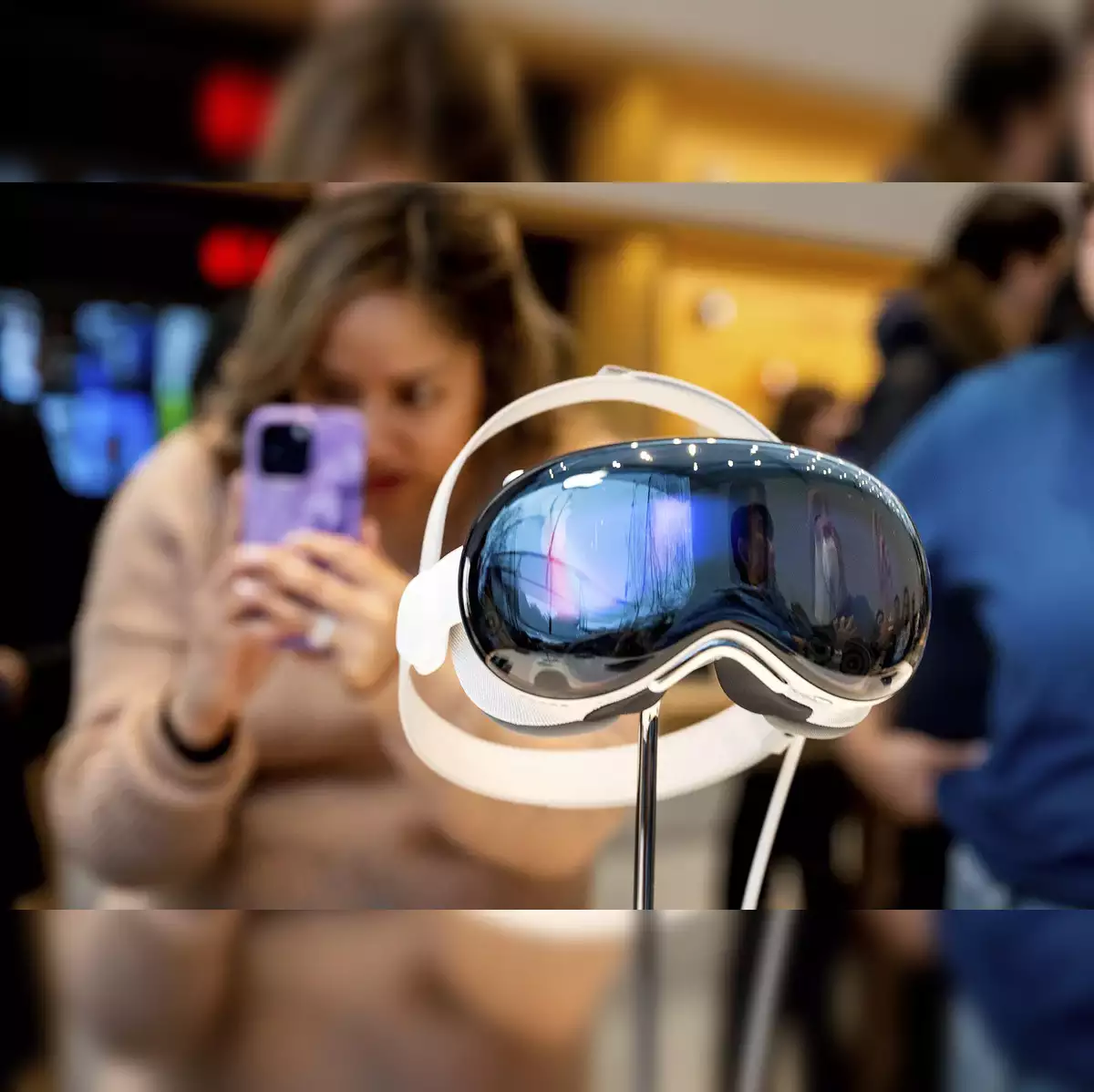Apple recently unveiled its latest innovation, the Vision Pro headset, which hit stores last week. This new device utilizes augmented reality (AR) technology, rebranded by Apple as “spatial computing,” and is worn on the head like a piece of headgear.

Tim Cook, Apple’s CEO, expressed excitement about the Vision Pro, hoping it will achieve the same level of success as the iPhone did when it launched in 2007. Priced at $3,500, the Vision Pro is one of Apple’s most expensive products, leading analysts to predict modest initial sales of around 1 million units in its first year.
Despite the potential slow start, history shows that Apple’s products often gain momentum over time. For example, while the iPhone initially sold only about 4 million units in its first year, it now boasts annual sales exceeding 200 million.

The success of the Vision Pro could popularize the term “spatial computing,” which refers to the seamless integration of physical and virtual worlds enabled by AR and artificial intelligence (AI). Cathy Hackl, an industry expert, believes spatial computing will revolutionize human-computer interactions, allowing devices to understand the world in new ways.
Apple has already curated over 600 specially designed apps for the Vision Pro, covering a range of categories such as entertainment, gaming, and education. However, notable exclusions include popular platforms like Netflix and YouTube. Additionally, concerns have been raised about potential issues such as increased screen addiction and detachment from reality that may come with widespread adoption of such immersive technology.
While Apple leads the way with the Vision Pro, other tech giants like Google and Meta are also exploring spatial computing products. Google’s Project Starline aims to create lifelike virtual meetings, while Meta’s Quest headset offers similar capabilities under a different marketing approach.
Equipped with high-resolution screens capable of displaying three-dimensional video recordings, the Vision Pro promises users an immersive experience. It responds to hand and eye movements, aiming to create a seamless interaction between the user and the device.
Despite its promising features, questions remain about the practicality of wearing a headset during social interactions, such as meals with others. As spatial computing continues to evolve, its true impact on daily life remains to be seen.
















































